Beyond the prejudices and ideological constraints that over the centuries have compromised the veracity of historical research, it is necessary to reconstruct a theory of the "primordial matriarchy" that proceeds through the comparison of different studies and does not exclude a priori the hermeneutics of myth: here we try to analyze in a comparative way the working hypotheses of JJ Bachofen, Marija Gimbutas and Herman Wirth
di Daniel Perra
originally published on The Dissident Intellectual
cover: “The Ur Mother”, from Youth, 1920
History and myth have a common origin. The myth tells the meaning of history e ancient humanity interpreted itself through myth. As the French thinker Alain de Benoist states, "thanks to the myth, man remained in the point / pole (sacred center of life) where the world and Being met" [1]. By its very nature, poetry is the manifestation closest to myth. This statement is made clear by the earthly story of Alexander the Great which, more than any other, is composed since its source of historical truth and poetry. And no one has ever been able to determine the groove that separates one from the other. Truth, after all, as Walter F. Otto argued, "is knowledge that escapes the grasp of logical thought and experiment and that claims to manifest itself only by itself" [2].
Poetry, therefore, is at the same time a manifestation similar to myth and to that philosophical thought that has always surrounded man even before he expressed it through writing. Heideggerian, it could even be said that thinkers and poets have been, since the dawn of humanity, the "guardians of language"; whether this finds expression in symbols (the language proper to metaphysics) or, as has happened in historical time, in writing.
Not being in possession of written evidence of early humanity, precisely the symbols, and in particular those reproduced, carved, or painted on the stones, appear to be the main tools for understanding history and myth. And having been religion (or rather, the forms of devotion linked to the worship of the divine in a world pervaded by the sense of the sacred and respect for nature) the most powerful form of civilization, it is precisely in the intertwining between this and the " law "that can be undertaken a hermeneutic journey through the myths of antiquity.
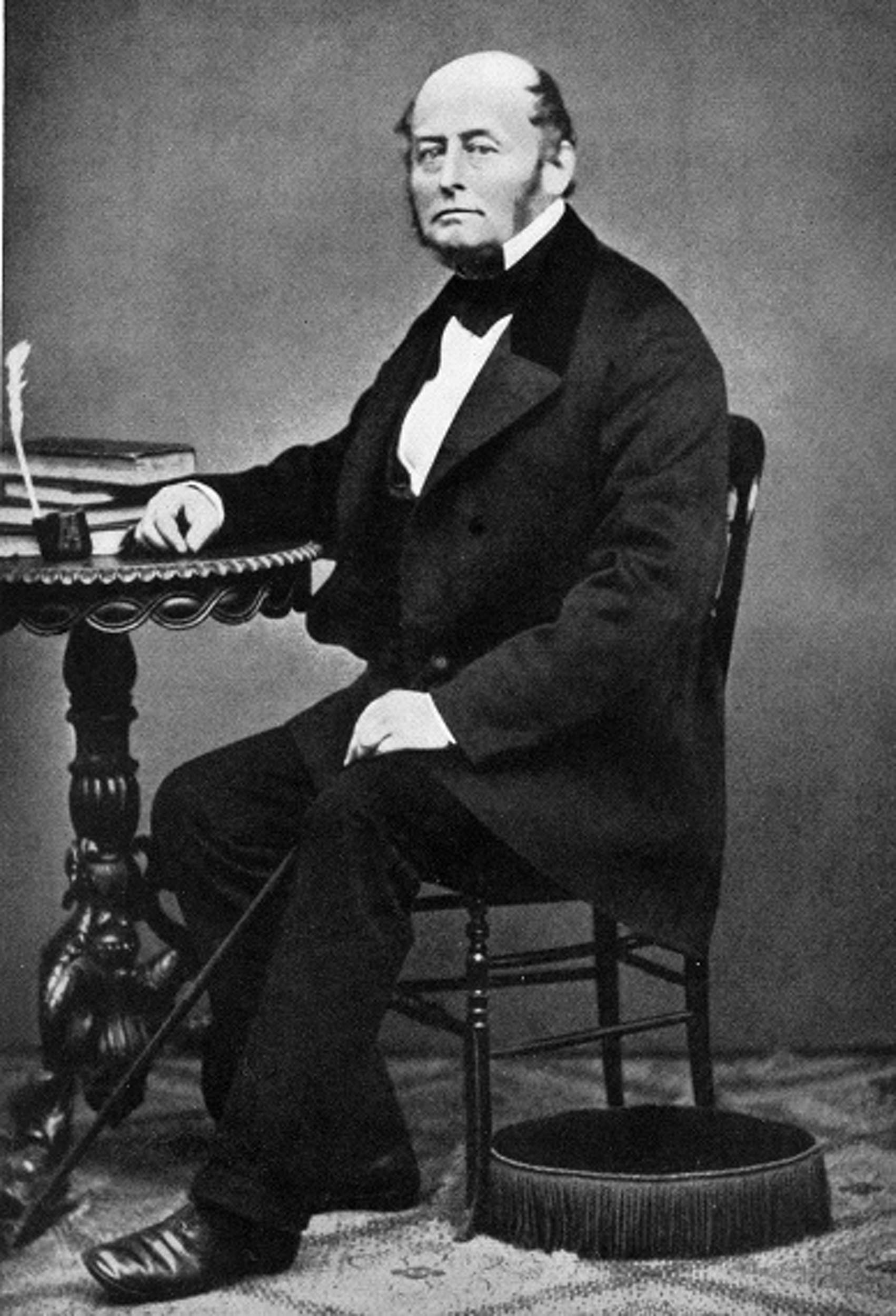
The one who best understood this close link between the forms of worship and the law of the origins was Johann Jakob Bachofen. Jurist, philologist and anthropologist, Bachofen elaborated a monumental theory of matriarchy through the comparative study of the myths of antiquity and of the historical-archaeological data acquired up to the middle of the nineteenth century. Like his subsequent studies, the Swiss thinker came to the conclusion that the civilizations of ancient Europe, pre-Indo-European and proto-Indo-European, had almost all a matrifocal character centered on the subordination of man to woman (or at least on a substantial parity of the two) and on the worship of one or more female deities. This primordial form of matriarchy, according to Bachofen, was chthonic and telluric in nature: a material principle that placed the fertility of the earth and that of the woman on the same level.
The matriarchy was therefore interpreted as a kind of ius natural (a physical right as opposed to the metaphysical right of patriarchy) in which the principle of the transience of material life reigned. The feminine right of the beginnings, in Bachofen's perspective, was that of vengeance and bloody sacrifice: a telluric right devoted exclusively to death and in which the destructive aspect of nature prevailed. While attributing an almost exclusively negative meaning to matriarchy, Bachofen nevertheless recognized the decisive role that women played in the development of human civilization. So he wrote in his study on matrifocal law [3]:
« The first civilization of peoples begins with women and women, in general, play an important part in every decline and rebirth. [...] The domestication of the sexually crude man is the work of the woman. In one there is strength and impetus, in the other there is the principle of calm, peace, fear of gods and law »
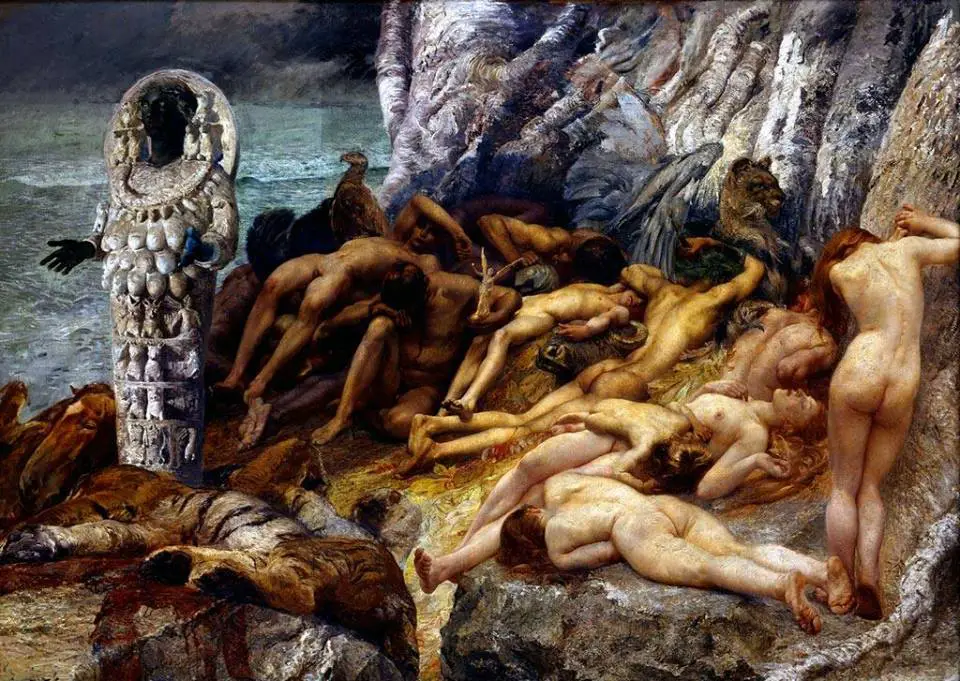
According to Bachofen it was the institution of marriage, and with it the "determination of paternity", to introduce a new principle of order into the world by sanctioning the passage from ius natural to ius civil [4]: a higher form of law which, as Julius Evola also affirmed, knew in Rome (the city of number Seven sacred to Apollo - like its hills and its first rulers) its highest and purest expression in the constitution of " State and unitary Imperium ”.
What Bachofen stigmatized about matriarchy was not the primacy of women, matrilineality or the creation of a gynecocratic society but, above all, its potential (and always in latency) degeneration into Amazonian etherism. And it was precisely this degeneration that contained in nuce the seeds for the evolution of law towards the patriarchal form.
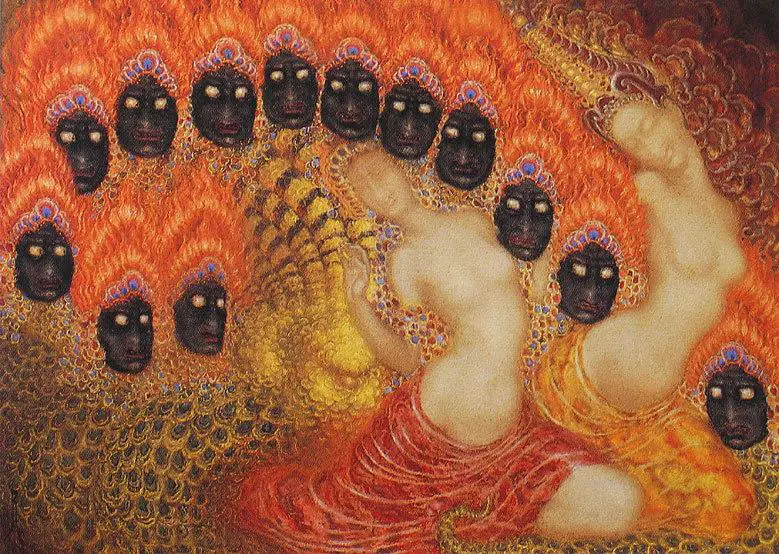
The overcoming of matriarchy, in fact, is contained in founding myth of the city of Athens. Theseus wins the Amazons and founds a city / state on the opposite principle to the matriarchal-Amazonian one. The defeated Amazons unite with man and the new right is the purely spiritual one of the Olympian Zeus [5]. The city, in fact, will take its name from his daughter Athena: the Divine Virgin created from the head of Zeus and without a mother. The materialism of the matrifocal principle, therefore, is replaced by the incorporeal and solar principle of patriarchy in which metaphysical purity dominates: that is, the very world of Being. And the woman, from now on, like the moon that shines with the reflected sunlight, borrows her spiritual splendor from the man.
To be fair, Bachofen's study, fascinating as it is, is full of inconsistencies and underestimates or minimizes the fundamental aspects taken up and developed by subsequent scholars. In the first place, Bachofen rightly links inextricably the spread of patriarchal law with the arrival in Europe of the Indo-European warrior peoples from the Turanian space of Central Asia. However, he doesn't seem to consider developing syncretic devotional forms that the Continent experienced at the turn of the two waves of invasion of the aforementioned peoples between 4000 and 2000 BC. C. The cult of the goddess Athena, celebrated by Bachofen together with Apollo as an expression of a higher spiritual right, for example, has a much more remote origin than the arrival of these nomadic peoples in Greece; and her very name has no Indo-European origin [6].
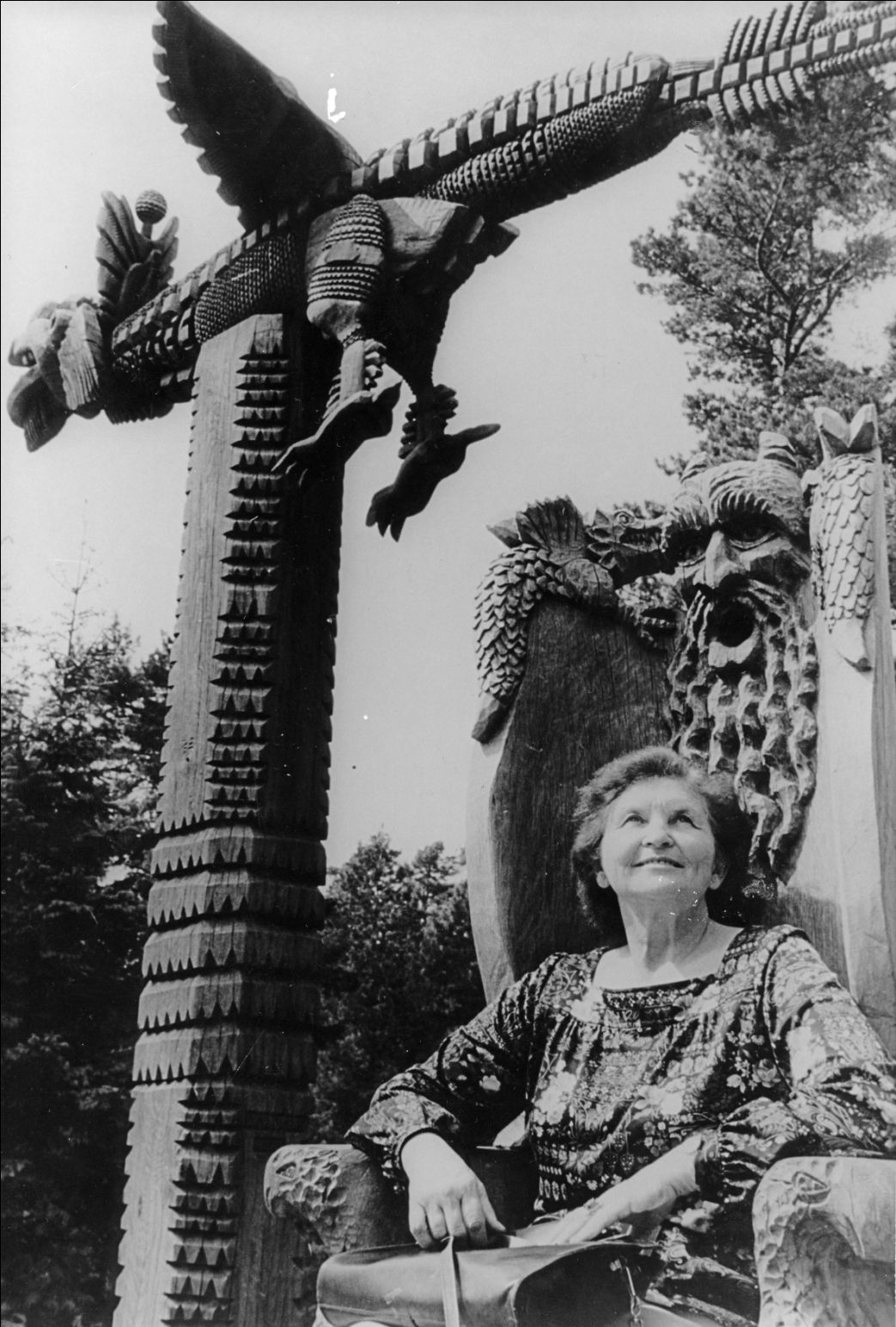
Secondly, it cannot be overlooked that Bachofen, in purely Eurocentric style of the "Western" intellectuality of his time, treated cultural forms extraneous to the European world with prejudice and superficiality with the precise desire to contrast "evolved" civilization Europe to the others. At the same time, Bachofen, while affirming that "the female priesthood would have contributed nothing to the elevation of mankind", acknowledged the decisive role that the Hyperborean virgins played in bringing the Apollonian cult to Delos from the sacred center of primordial humanity. And the very "right" of the Hyperborean world, even in his study, was represented as a sort of theocracy flanked by the institution of the "solar virgins": the priestesses of the Divine.
It is also clear that the role of female divinity of the early days (that Mother Goddess or Great Goddess - from whose womb everything comes - on which matriarchal and matrilineal law was based) was far more complex than that merely connected to the fertility of the earth who attributed it, almost as a sort of unique and exclusive prerogative, Bachofen himself. This cult, in fact, was inseparable from the concept of "Eternal return": that cyclical rotation of time marked by the succession of seasons both in nature and in human life. As the Lithuanian archaeologist showed Marija Gimbutas In his work The living goddesses, this great early goddess manifested her innumerable forms through the cycle of birth, nurturing, growth, death and regeneration. And the leading role attributed to women in ancient times was directly linked to her ability to procreate and, therefore, to be similar to divinity. [7].
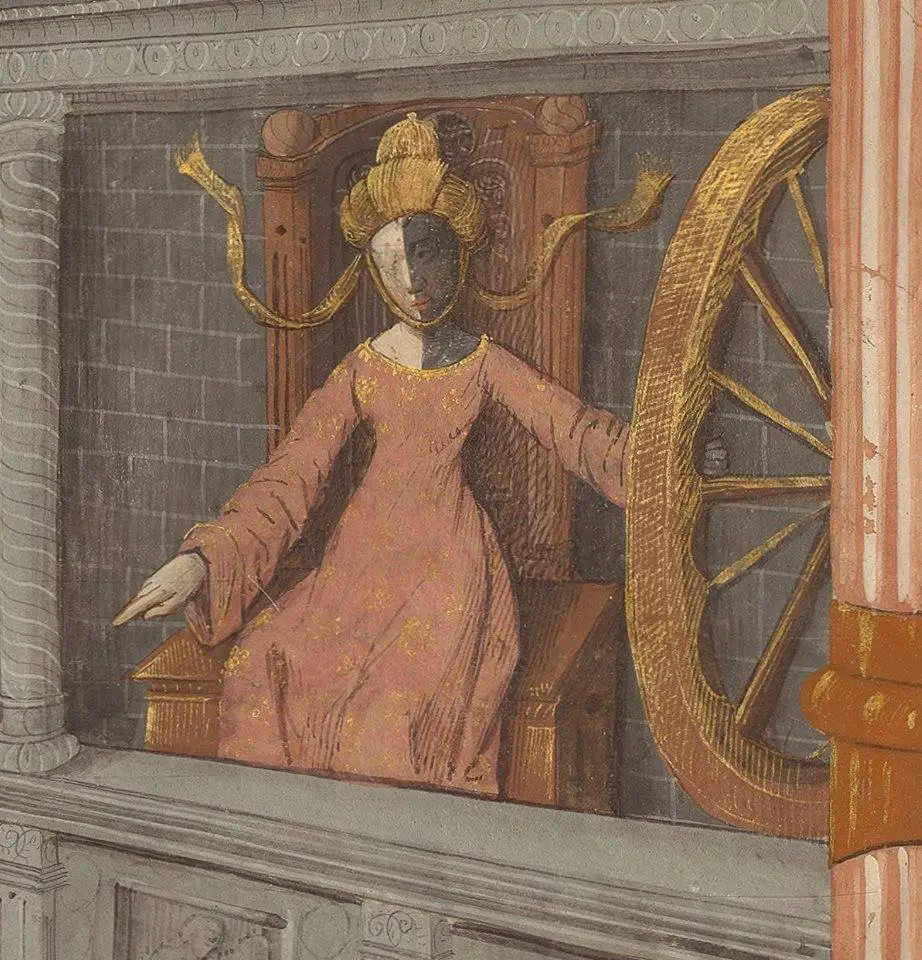
To the Goddess, ruler over all sources of water (as it is in the water kingdom that life is born - an idea widely developed also by the Egyptian religion and Hermeticism, as well as by the Greek philosopher Thales and the epic poet Homer), a male figure was often flanked as his natural fulfillment. The male God, usually associated with the image of the Bull (source of procreative energy that occurs on three different degrees in the development of Neolithic cults: chthonic animal, lunar and finally solar) embodied the strength and virility necessary to awaken the world from sleep. The union of this "divine couple" which was usually celebrated in the rite of the "sacred wedding" (hierogamy) - the union between a virgin priestess and God - constituted the spiritual foundation of the cosmic regeneration of life and of the universe itself.
This devotional principle does not seem to differ in its foundations from that described in Vedic hymns and taken for example from Bal Gangadhar Tilak to support his thesis of the primordial Arctic home of what he himself defined as the original "Aryan race". On the basis of a comparative analysis of the sacred texts of the Hindu tradition and of Zoroastrianism (also in the light of contemporary scientific discoveries), this Indian thinker came to the conclusion that, being the polar climate in the inter-glacial period decidedly mild, right there , in the Arctic space, lived the men of the beginnings.
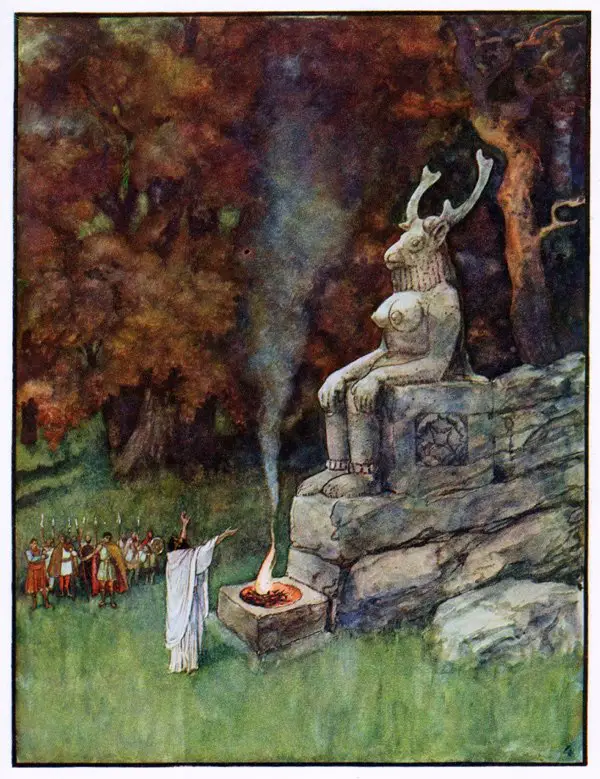
I Puranas, for example, they identify Mount Meru, at the terrestrial North Pole, as the home of the gods. In the RigVeda the Big Dipper is positioned exactly above the head of this primordial humanity that shared with the divine the eternal Time of the God-year. There, in the far North, a human day was a God-year: that is, six months of light and six months of darkness. And the Laws of Manu, in this regard, report:
« A human year is a day and night of the gods; so the two are divided: the northern passage of the sun is the day and the southern one is the night. "
In the Arctic mansion, furthermore, Ahura Mazda tells King Yima in theAvesta (sacred text of the Zoroastrian Tradition), "a year seems like a day". Here, man could witness the ecstatic phenomena of divine splendors: the dawn and the rising of the sun that marked the return and regeneration of life after darkness. The dawn, in the Vedic hymns, is made up of thirty continuous and inseparable parts from each other. It is a prolonged phenomenon during which "many splendors" follow one another (according to the philological interpretation of the term "Bahulani Alani") [8]. At the first dawn, "the bride", "the new mother", are followed by her sisters until the birth (or rebirth) of Indra: the rising of the sun on the horizon. Indra is opposed by Vritra, described as "shrouded in darkness", just as the Arya principle (typical of the "Aryan race") would be opposed by the darkness of Dasa [9].

It is infamous the confusion that at the turn of the nineteenth and twentieth centuries (and throughout the first half of the latter) led part of the European cultural world to a sort of competition to establish which was the original "Aryan race" which, by virtue of a superior culture, had "Aryanized" all the others . And the disastrous results that, especially in Germany, were produced by theextremeization of these theories. However, it was in Germany itself during this period that Herman Wirth (Danish naturalized German scholar) was able to elaborate a theory on the dawn of mankind and on the ancestors of the "Aryan race" which in large part contrasted with the official one of the Nazi regime.
Wirth, in fact, was convinced that the Indo-European "invaders", bearers of that crude and utilitarian warrior-patriarchal model in which the woman was subjected to the man, were already "mestizo" peoples and that, consequently, they could not represent the pure "race" and "culture" of primordial humanity. This multifaceted scholar was convinced that the pantheon of the ancestral Norse people was led by a Goddess: a pure spiritual creation that revealed itself in the cosmic law of eternal circular motion. And he was equally convinced that the "materiality" and "chtonicity" of matriarchy were nothing more than an invention of the patriarchal culture imported to continental European soil by migrants from Central Asia.
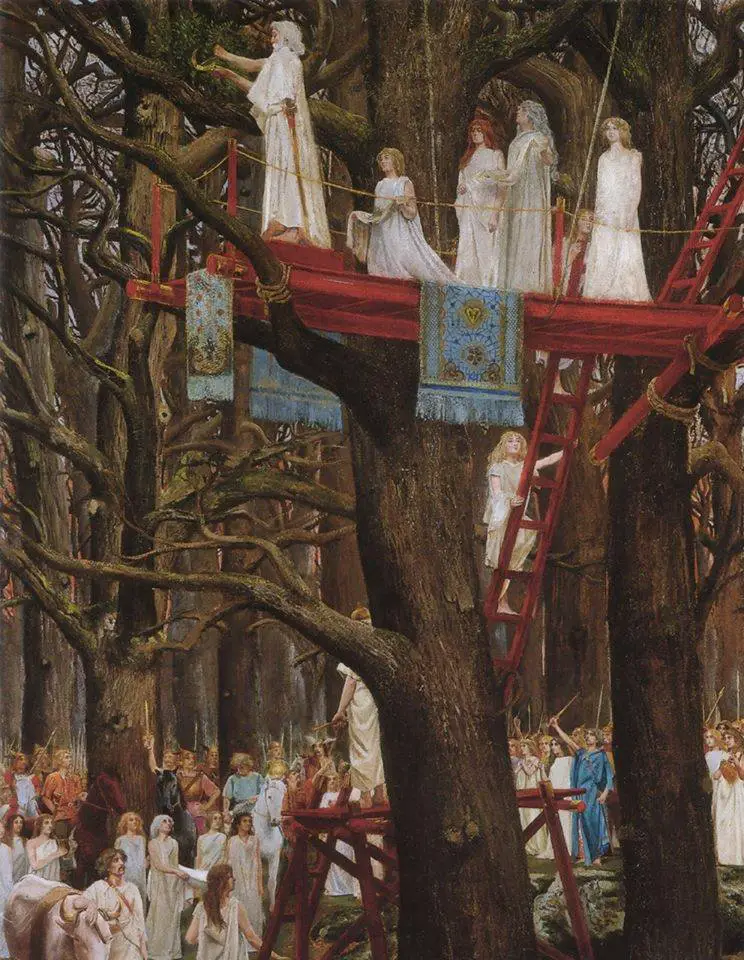
According to this thesis, the most ancient cultures of the Mediterranean were created and established by the bearers of the "Hyperborean matriarchy" who came from the North-West, by sea and through northwestern Africa, and from there they would reach the Near East. And these others would be none other than the so-called "Peoples of the sea" whose origin is even traced back to the myth of Atlantis: sacred center of passage in the migration of Hyperborean peoples to the South [10]. In partial support of Wirth's theory there is the fact that the races that inhabited the Mediterranean islands, linked to the cult of the Goddess and the myth of the Sea Peoples (laid down by the Sardinia in Malta, up to the Pelasgian area), were dolichocephalic like the one described in the aforementioned Tilak study.
In fact, the skulls found in the Sardinian and Maltese hypogea (Anghelu Ruju and Hal Saflieni in particular) show this characteristic bone conformation. And in these same archaeological sites there are symbols that, theoretically, could corroborate the Atlantean theory. One above all is that of "Triple belt" subsequently used also in many places of worship built by the Knightly Order of the Templars [11]. This symbol, consisting of three equidistant concentric squares with cross lines on the sides, would represent the plan of the city of Poseidonia: the most important center of Atlantis also described by Plato in Critias.
On the walls of the Sardinian hypogea (or House of Janas - "house of the fairies"), moreover, it is not difficult to identify the symbols of the "labyrinth" (always connected to the plant of Poseidonia) and even a sort of "Chessboard" before its time painted in white and red ocher. The modern game of chess, as is well known, has a relatively recent origin (first millennium AD) and would have arrived in Europe through Persia; another country whose people are inextricably linked to the "Arctic home". But the symbol of the "chessboard", with its alternation of black and white squares, would once again have a remote origin in time, perhaps linked to the alternation between light and darkness, between good and evil, typical of that year-God which represented the very system through which hyperborean and primordial humanity regulated its being in the world.

Another evidence to support Herman Wirth's thesis would be the fact that the religion of the ancient inhabitants of Sardinia, as reported by the scholar Raffaele Pettazzoni, was a sort of "imperfect monotheism" in which one deity dominated the others who, more often than not, were simply identified as his own attributes [12].
Wirth was firmly convinced of the monotheistic character of the religion that primordial humanity practiced in the Arctic home. And he was equally convinced that peoples of "Nordic" origin had imported their monotheistic beliefs throughout the Mediterranean area and the Near East. If this were true, it would not be excluded that the influence (amply testified in the so-called "letters of Amarna") of the Shardana (one of those Sea Peoples who arrived in the Mediterranean and built their base in Sardinia) on Egypt has somehow determined the famous monotheistic "solar" religious turn of Pharaoh Akhenaten [13].
But Wirth went even further and went as far as hypothesize a hyperborean origin of Christianity. According to his theory, as already stated, millennia before the affirmation of Jewish "exclusivist" monotheism, a purely monotheistic, solar and spiritual religious form already existed. Therefore, Christianity would have been nothing more than a sort of reaffirmation of this Tradition preserved by means of an "Atlantic" group established from time immemorial in Galilee: a land rich in traces of solar megalithic religiosity.

He was convinced that the Sea People of the "Amorites" (or "Amorites") had been the bearer of this Tradition on the coasts of the Levant and that their name derives from Mo-uru: the oldest sacred center in the West according to the Zoroastrian sacred text Bundahishn. The name Mo-uru, in fact, in its different phonetic variants is present several times in the same Bible. And the term "am-uru”, From which the name of the Amorites derives, in Hebrew it would mean precisely "Peoples of the West". Wirth was also convinced that other peoples of antiquity, such as the Mauri of West Africa or even the maori of Oceania (who share religious beliefs not unlike those of the peoples of Old Europe), were all refugees from this ancestral sacred center [14].
Recent scientific studies have also shown how another people mentioned several times in the Bible, that of the Philistines (also counted among the Peoples of the Sea), had a "Western" origin: probably Cretan / Pelasgian. Add to this the fact that Christianity, as it is known today, has remarkable similarities with different devotional aspects of ancient Mediterranean Europe: from the belief in divine child born in a cave - a symbol with a very strong initiatory value - to the "mortal God" whose "resurrection" marks the passage to a higher stage of Being.
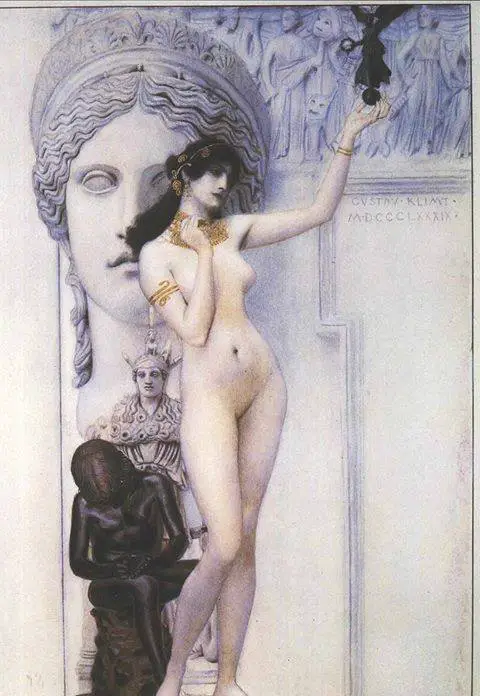
Herman Wirth's beliefs clashed openly with the "official" ones of Hitler's Germany. The Nazi idea of carrying out a political construction on the basis of the establishment of militarized corps that followed the manner of Germanic prehistory, in Wirth's perspective, represented a total alteration of the primordial maternal foundation on which Nordic spirituality was based and to which it was necessary to connect in order to participate in the very meaning of existence [15]. It is therefore not surprising that this scholar had to suffer a double marginalization, both when the Nazi regime was still alive and after World War II.
His theory of primeval monotheism (or Nordic Christianity), however, has a meeting point with Bachofen's work. The Swiss jurist was convinced that both matriarchal and patriarchal law would be superseded by a higher "final" law. This right was the Christian right of pure love. And, considering the fact that Herman Wirth regarded Christianity as already inherent in the spiritual world of the Arctic abode, this "final realization" would be nothing more than a return to the origins of humanity.
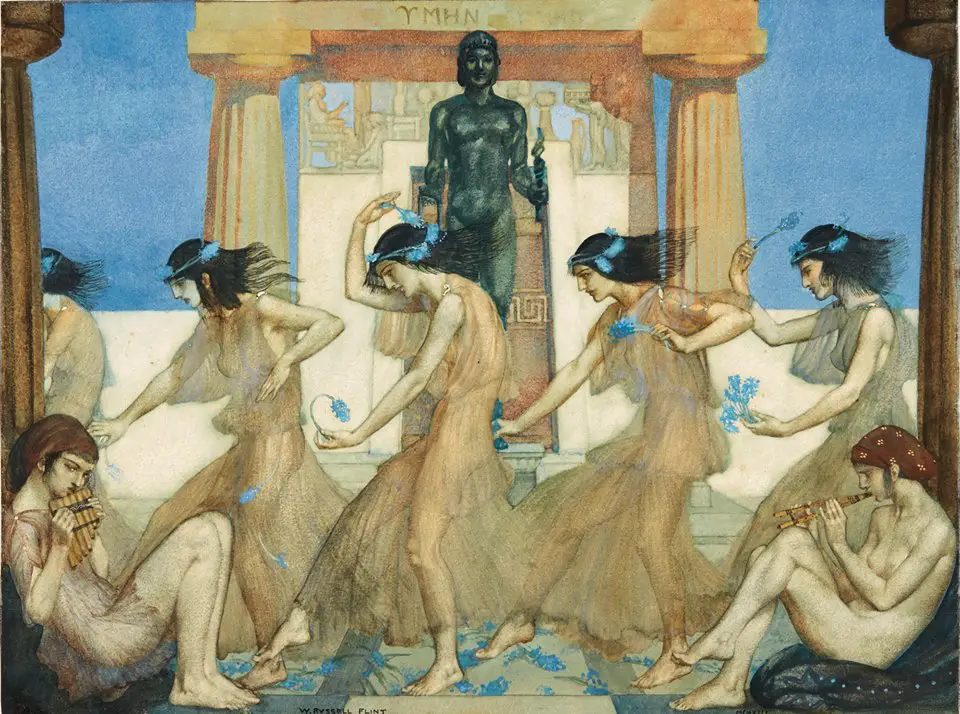
Note:
[1] A. De Benoist, The Inner Empire. Myth, authority, power in modern and contemporary Europe, Ponte alle Grazie, Naples 2000, p. 103.
[2] WF Otto, Der Mythos und das Wortin Das Wort der Antike, Stuttgart, Klett, p. 362.
[3] JJ Bachofen, The matriarchy. Research on the gynecocracy of the ancient world in its religious and juridical aspects, Einaudi, Turin 2016, p. 127.
[4] Ibid., P. 322.
[5] Ibid., P. 330.
[6] M. Gimbutas, The living goddesses, Medusa Editions, Milan 2005, p. 205.
[7] Ibid., P. 33. In this regard, see also M. Gimbutas, The language of the goddess, Venexia, Rome 2008.
[8] Bal Gangadhar Tilak, The Arctic abode in the Vedas, ECIG, Genoa 1994, p. 49.
[9] Ibid., P. 69.
[10] A. Branwen, Ultima Thule. Julius Evola and Herman Wirth, Edizioni under the banner of Veltro, Parma 2007, p. 48.
[11] See GM Longhi, Mysteries of an ancient cult. The goddess and the bull, Circle of the Moon, Verona 2016.
[12] R. Pettazzoni, Primitive religion in Sardinia, Carlo Delfino Publisher, Sassari 1981, p. ninety two.
[13] See G. Lilliu, The civilization of the Sardinians. From the Paleolithic to the age of the nuraghi, The Maestrale, Nuoro 2017, pp. 459-60.
[14] Ibid., P. 59.
[15] Ultima Thule, therein cit., p. 64.

A comment on "The Amazons and the Origins: on the theory of "primordial matriarchy""